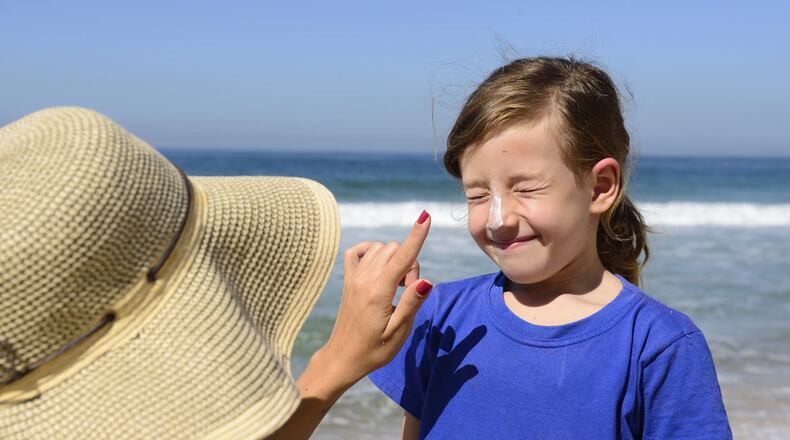Slather that sunscreen on your kids and don’t hold back. It could help save their lives.
A study out of Australia found that using sunscreen in childhood can reduce the risk of developing melanoma, the deadliest form of skin cancer, by 40 percent in young adults.
As with most cancers, the risk of melanoma increases with age. But according to the American Cancer Society, melanoma is one of the most common cancers in young adults (especially young women).
Researchers at the University of Sydney analyzed data collected from nearly 1,700 Australians, ages 18 to 40. They looked at those who were regular users of sunscreen in childhood and compared to those who rarely used the products. The results were published last week in JAMA Dermatology.
“The association of sun exposure and sunburn with melanoma risk, particularly in childhood, is well established and this study showed that regularly using sunscreen was protective against the harmful effects of sun exposure,” said Anne Cust, lead researcher and director of the Cancer Epidemiology and Prevention Research group at the University of Sydney’s School of Public Health.
Approximately two in three Australians will be diagnosed with some type of skin cancer by the time they are 70, according to the study.
It is estimated that in 2018, more than 91,000 people in the United States will be diagnosed with melanoma. In the last 10 years, rates for new cases of melanoma have been rising on average 1.5 percent each year, according to the U.S. Centers for Disease Control and Prevention.
The Australian study was funded by the National Health and Medical Research Council (NHMRC), Cancer Council NSW, Cancer Council Victoria, Cancer Council Queensland, and the U.S. National Institutes of Health.
The CDC recommends these measures to avoid UV radiation:
— Stay in the shade, especially during midday hours.
— Wear clothing that covers your arms and legs.
— Wear a hat with a wide brim to shade your face, head, ears, and neck.
— Wear sunglasses that wrap around and block both UVA and UVB rays.
—Use sunscreen with a sun protection factor (SPF) of 15 or higher, and both UVA and UVB (broad spectrum) protection.
— Avoid indoor tanning.
About the Author
Keep Reading
The Latest
Featured


